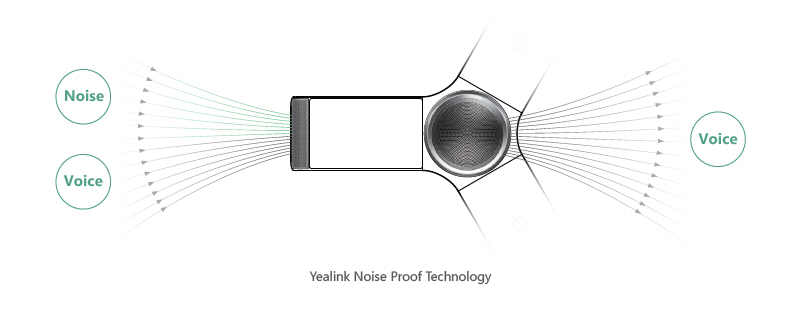Introduction
In an era characterized by rapid technological advancement, voice communications have transcended traditional boundaries. With the rise of adaptive learning algorithms, the landscape of how we communicate is set to undergo a revolutionary transformation. This article delves deep into the intersection of adaptive learning and voice communications, illuminating its impact on various sectors, with a particular focus on VoIP phone service.
Understanding Adaptive Learning Algorithms
What Are Adaptive Learning Algorithms?
Adaptive learning algorithms are systems designed to improve their performance over time through experience. By analyzing data and recognizing patterns, these algorithms can adjust their outputs based on user interactions. This ability makes them particularly effective in enhancing user experiences across various applications.
The Evolution of Adaptive Learning
Historically, adaptive learning began as a rudimentary concept in machine learning. Over time, it has evolved into sophisticated systems utilized in education, healthcare, and now voice communication. As technology progresses, so does the potential for these algorithms to adapt to increasingly complex datasets.
Key Components of Adaptive Learning Algorithms
Data Input: The foundation of any adaptive system is data. In voice communications, this includes audio samples, user interactions, and contextual information. Pattern Recognition: Utilizing techniques such as machine learning and natural language processing (NLP), these algorithms identify trends and make predictions. Feedback Mechanisms: Continuous feedback loops allow systems to refine their operations based on real-time user engagement.How Adaptive Learning Algorithms are Influencing Future Voice Communications
Transforming Voice Recognition Technologies
One of the most significant impacts of adaptive learning algorithms is seen in voice recognition technologies. Systems like Google Assistant and Apple’s Siri leverage these algorithms to provide more accurate responses over time. They learn from user behavior to understand context better and improve their accuracy with each interaction.

Enhancing Customer Service with VoIP Phone Service
VoIP phone services utilize adaptive learning to streamline customer interactions. By analyzing call data and customer feedback, companies can tailor their services to meet VoIP Phone Service specific needs—ultimately improving customer satisfaction while reducing operational costs.
Predictive Analytics in Voice Communication
Predictive analytics driven by adaptive learning allows businesses to forecast customer needs based on historical data. This capability is invaluable for improving user experience in VoIP services; businesses can anticipate call volumes and allocate resources accordingly.
The Role of Artificial Intelligence in Voice Communication
AI-Powered Voice Assistants
Voice assistants powered by AI are becoming commonplace in both personal and professional environments. These systems not only respond to commands but also learn from users’ preferences over time—enhancing functionality through adaptive learning methodologies.
Natural Language Processing (NLP) Integration
Natural Language Processing is central to the effectiveness of voice communication technologies today. By integrating NLP with adaptive learning algorithms, systems can better interpret nuances in human speech and respond more intelligently.
Voice Biometrics: Securing Communications
Adaptive learning algorithms also play an essential role in security via voice biometrics—an emerging technology that uses individual voice characteristics for authentication purposes. This application is crucial for safeguarding sensitive communications conducted over VoIP networks.
Challenges Facing Adaptive Learning Algorithms in Voice Communications
Data Privacy Concerns
As with any technology relying on extensive data collection, privacy concerns are paramount. Users must be assured that their data is handled securely without compromising personal information.
Algorithm Biases
It’s crucial for developers to ensure that their adaptive learning systems are free from biases that could affect performance or lead to discriminatory outcomes—especially given the diverse demographics that utilize voice communication technologies.
Integration Issues with Legacy Systems
Many existing communication infrastructures may struggle when integrating new adaptive technologies due to outdated hardware or software capabilities—a challenge that must be addressed as we move forward into a more advanced digital landscape.
Future Trends in Voice Communication Technologies
Personalization Through Machine Learning
As machine learning continues to evolve, we can expect even greater levels of personalization within voice communication platforms—allowing users to customize their interaction experiences based on past behavior and preferences.
Cross-Platform Functionality
Future developments will likely see enhanced cross-platform compatibility among various devices using VoIP phone services—facilitated by adaptive learning algorithms that seamlessly integrate different communication methods into one cohesive experience.
The Rise of Emotion Recognition Technology
Imagine a world where your virtual assistant not only understands your commands but also detects your emotional state! Upcoming advances may incorporate emotion recognition technology powered by adaptive algorithms—leading to truly responsive communication systems.
Practical Applications of Adaptive Learning Algorithms in Voice Communications
Healthcare Industry Applications
In healthcare settings, adaptive learning algorithms enhance telemedicine services by improving patient interactions through tailored communication strategies—and ensuring that healthcare providers deliver relevant information effectively via VoIP channels.
Education Sector Enhancements
Adaptive voice technologies have significant implications for educational environments where personalized tutoring experiences can be developed using VoIP phone services equipped with advanced interactive features powered by AI-driven algorithms.
Corporate Training Solutions
Corporations are leveraging these advanced technologies for training purposes—creating interactive scenarios where employees can engage with virtual assistants tailored specifically for skill development within professional contexts.
FAQs
1. What are the main benefits of using adaptive learning algorithms in voice communications?
The primary benefits include improved accuracy in understanding speech patterns, enhanced user experiences through personalization, streamlined customer service operations via VoIP phone services, and increased efficiency through predictive analytics.
2. How do adaptive algorithms handle diverse languages?
Adaptive algorithms continuously learn from multilingual datasets allowing them to recognize accents and dialects better over time—ensuring effective communication across different linguistic backgrounds.
3. Are there privacy concerns associated with using these technologies?

4. How can organizations benefit from implementing VoIP services integrated with AI?

Organizations can achieve cost savings while enhancing operational efficiency; personalized customer interactions result from analyzing call patterns—the outcome being improved client satisfaction rates overall!
5. Will future advancements lead us toward fully autonomous conversations?
While fully autonomous conversations remain a goal within artificial intelligence research fields—the current trajectory indicates significant strides towards achieving more fluid dialogues driven primarily by context-aware conversational agents!
6. What challenges might hinder the adoption of these advanced technologies?
Challenges could include algorithm biases affecting decision-making processes or integration difficulties stemming from legacy systems hindering seamless transitions into newer frameworks!
Conclusion
In summary, as we navigate this fascinating terrain where technology meets human interaction, it becomes clear that adaptive learning algorithms will significantly shape future voice communications—including how we engage through VoIP phone service platforms. From enhancing customer support operations to revolutionizing personal assistance applications—all signs point toward a future rich with possibilities driven by intelligent algorithmic adaptability! Embracing this evolution means embracing an era defined by smarter connections—one where our voices resonate clearer than ever before!